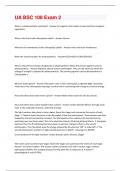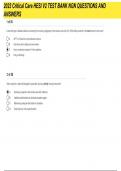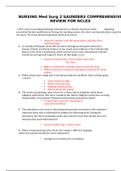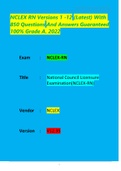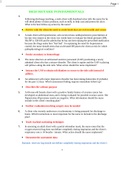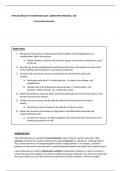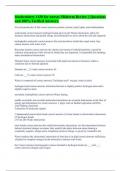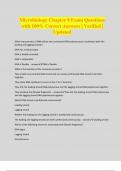Exam (elaborations)
Test Bank for Chemistry: The Molecular Nature of Matter, 8th Edition by Jespersen
- Course
- Institution
Test Bank for Chemistry: The Molecular Nature of Matter, 8th Edition 8e by Neil D. Jespersen, Alison Hyslop. Full Chapters test bank are included with answers - Chapter 1 to 22 included 0 A Very Brief History of Chemistry 1 0.1 Chemistry’s Important Concepts 2 0.2 Supernovas and the Elem...
[Show more]




